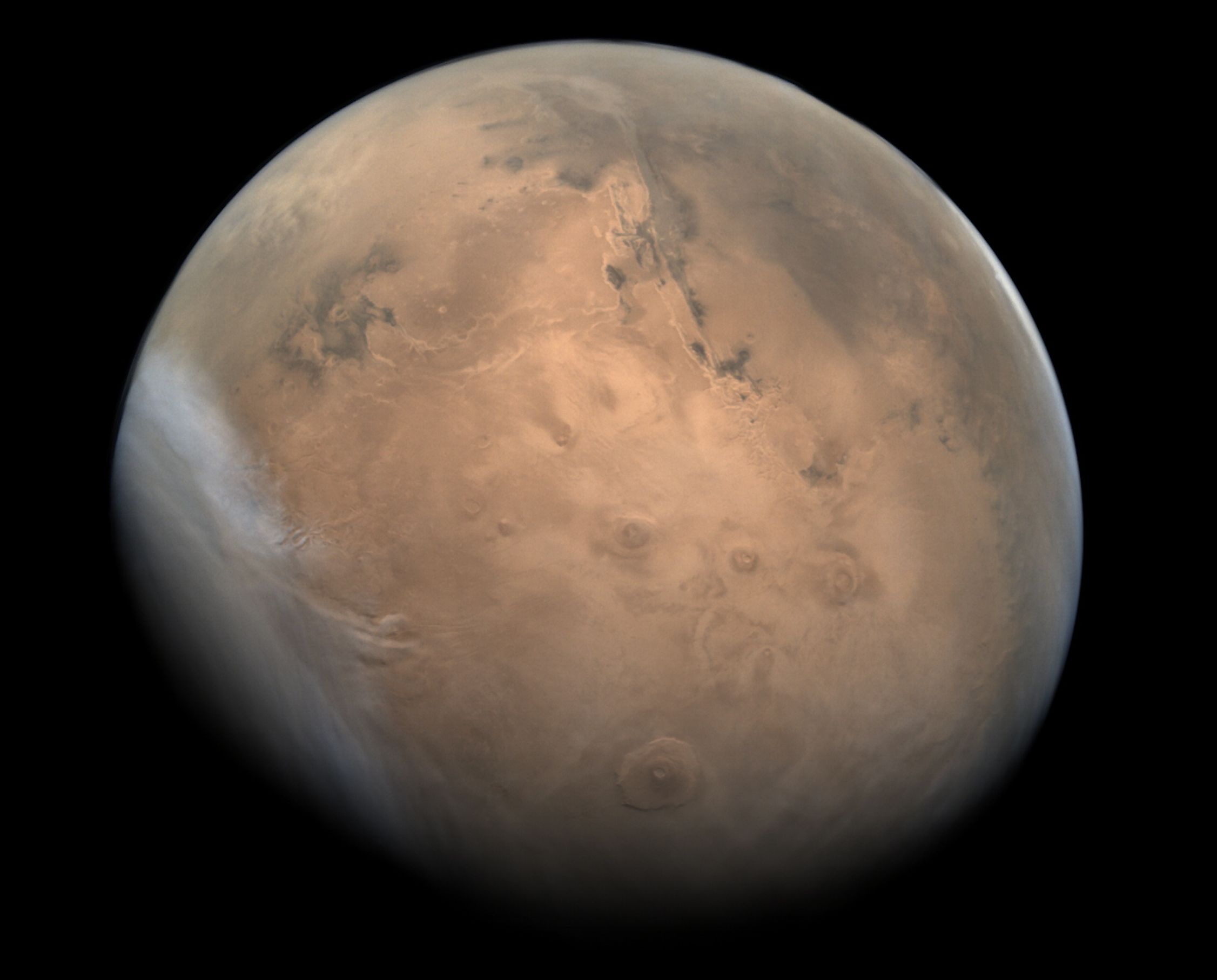
How Mars Lost Its Atmosphere
Mars is perhaps the most studied world in our solar system other than Earth. An obvious reason for this is that Mars used to be very similar to the Earth. A couple billion years ago, Mars had a thick atmosphere, and liquid water flowed across the surface in streams, rivers, lakes, and perhaps even oceans. Today, however, Mars is a barren, cold, dry wasteland. The Red Planet no longer possesses a thick atmosphere, and all its water has dried up. What happened to the Martian atmosphere and water?
Martian Atmosphere Today
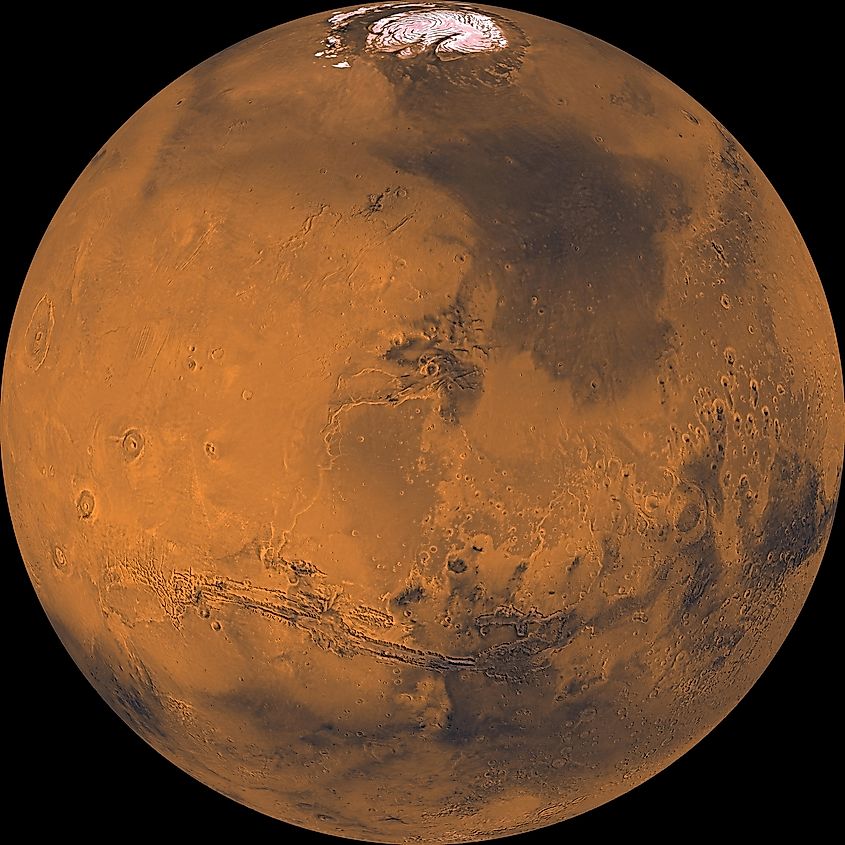
While Mars does have an atmosphere, it is extremely thin. The Martian atmosphere is less than 1% as dense as Earth’s, which makes the air pressure on Mars more comparable to empty space than it does the surface of our world. The atmosphere of Mars is primarily composed of carbon dioxide, along with small amounts of nitrogen and argon. While carbon dioxide is a greenhouse gas and it makes up most of Mars’s atmosphere, the atmosphere itself is far too thin for any significant form of a greenhouse effect, and so temperatures in the atmosphere and surface are exceedingly cold. The atmospheric pressure on Mars is far too low for water to exist in liquid form anywhere on the Martian surface.
Martian Atmosphere In The Past
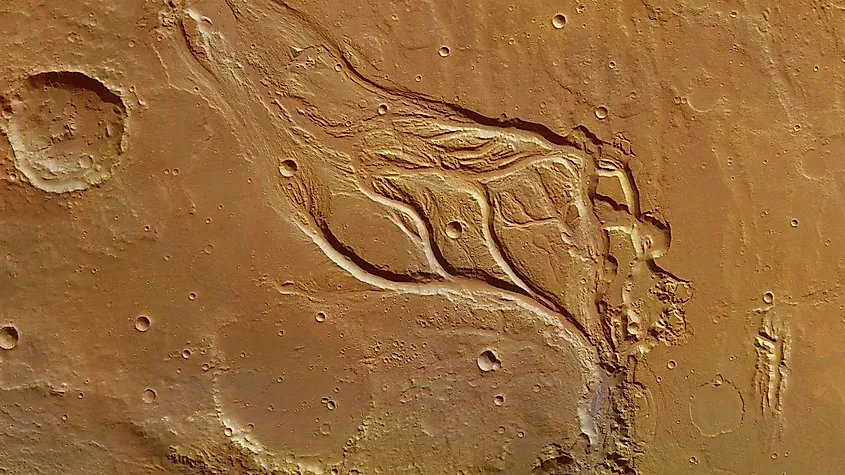
While Mars has a thin, cold atmosphere today, things were not always this way. At least two-billion years ago, evidence suggests that Mars had an atmosphere similar to that on Earth, with an abundance of nitrogen and oxygen. Mars is also believed to have had a noticeable greenhouse effect in the past, allowing temperatures to be higher than they otherwise would be. With a thick atmosphere surrounding the planet, Mars was also capable of supporting the existence of liquid water on the surface. In fact, the Martian surface is covered in geologic features that could have only formed in the presence of liquid water. Ancient Mars was a vastly different world than the one we see today, yet what happened to the atmosphere and water?
Mars And The Sun
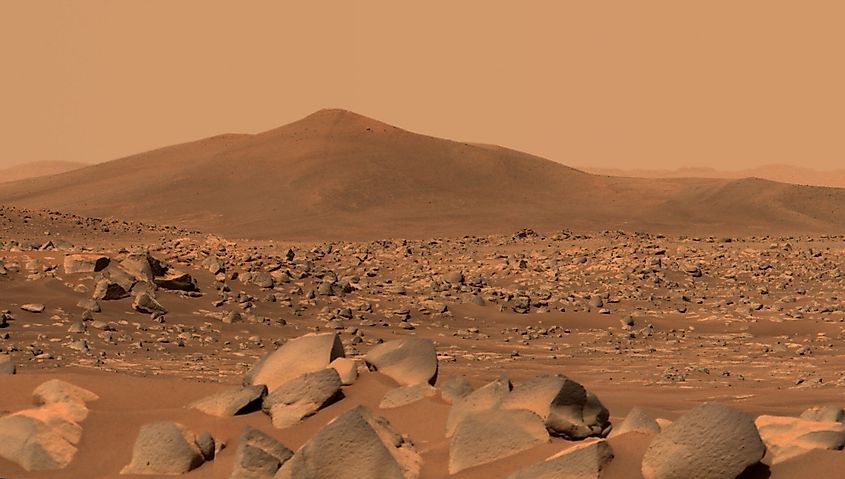
Here on Earth, we are protected from solar radiation by our magnetic field. Without a magnetic field, charged particles from the sun would slowly strip our world of its atmosphere, and eventually of its water, too. Thankfully, the Earth has a spinning iron core, which causes the formation of our magnetic field which redirects charged particles from the sun. Unlike Earth, Mars does not have a strong magnetic field. In fact, the magnetic field from Mars is only a remnant emanating from the planet’s crust. At one point, Mars did have a magnetic field, yet it has since become so weak that it no longer offers any significant protection from solar radiation. Without a magnetic field to protect Mars, solar radiation slowly stripped the planet of its atmosphere. As the atmosphere grew thinner, air pressure became lower, and it eventually became too low for liquid water to continue existing on the surface. Slowly but surely, Mars was transformed from an oasis to a wasteland.
How Did Mars Lose Its Magnetic Field?
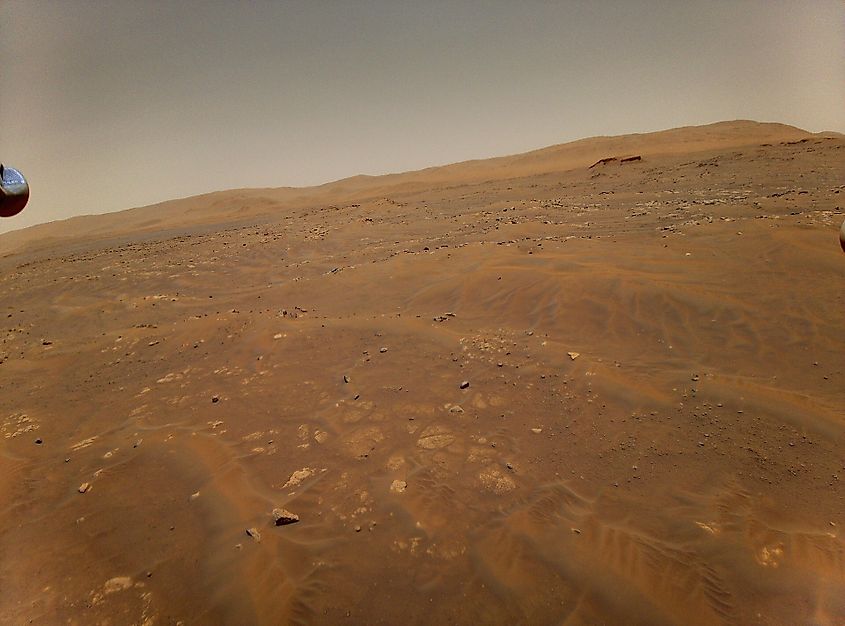
For the rocky planets of our solar system, magnetic fields are produced by a spinning iron core. Metal can conduct electricity, and if that electric charge also happens to be moving, it will induce a magnetic field. For example, Earth has a spinning iron core that creates the magnetic field of our world. Every planet in the inner solar system has an iron core, yet not all of them are moving. In the case of Mars, its iron core has stopped moving, and so over time, it lost its magnetic field. The reason why Mars’s core stopped moving is likely due to the loss of internal heat, a direct result of the fact that smaller planets lose heat faster than larger ones. If a planet is unable to replenish that heat faster than it loses it, the core will eventually cease all motion.
Oasis To Wasteland
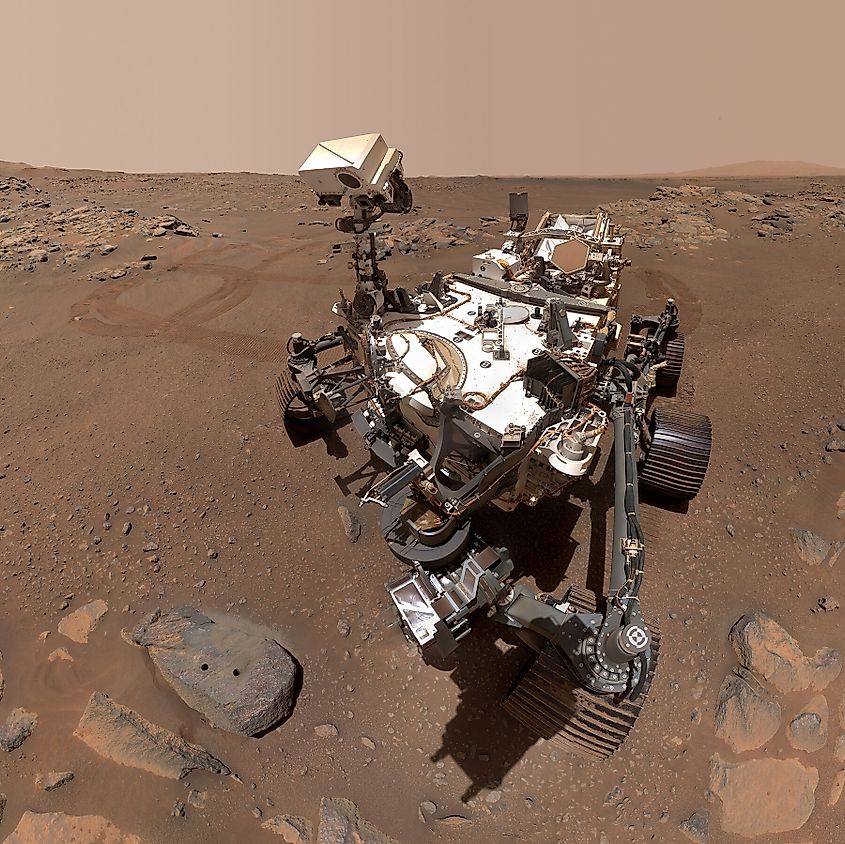
Mars has experienced a tremendous amount of change over its 4.5-billion years history. It was once an oasis in the solar system, having all of the necessary conditions for the formation and evolution of life. Unfortunately, Mars got unlucky, eventually losing its magnetic field, which in turn caused the eventual disappearance of its atmosphere and surface water. Martian rocks and geology still hold evidence of an ancient world that looked similar to the Earth.











